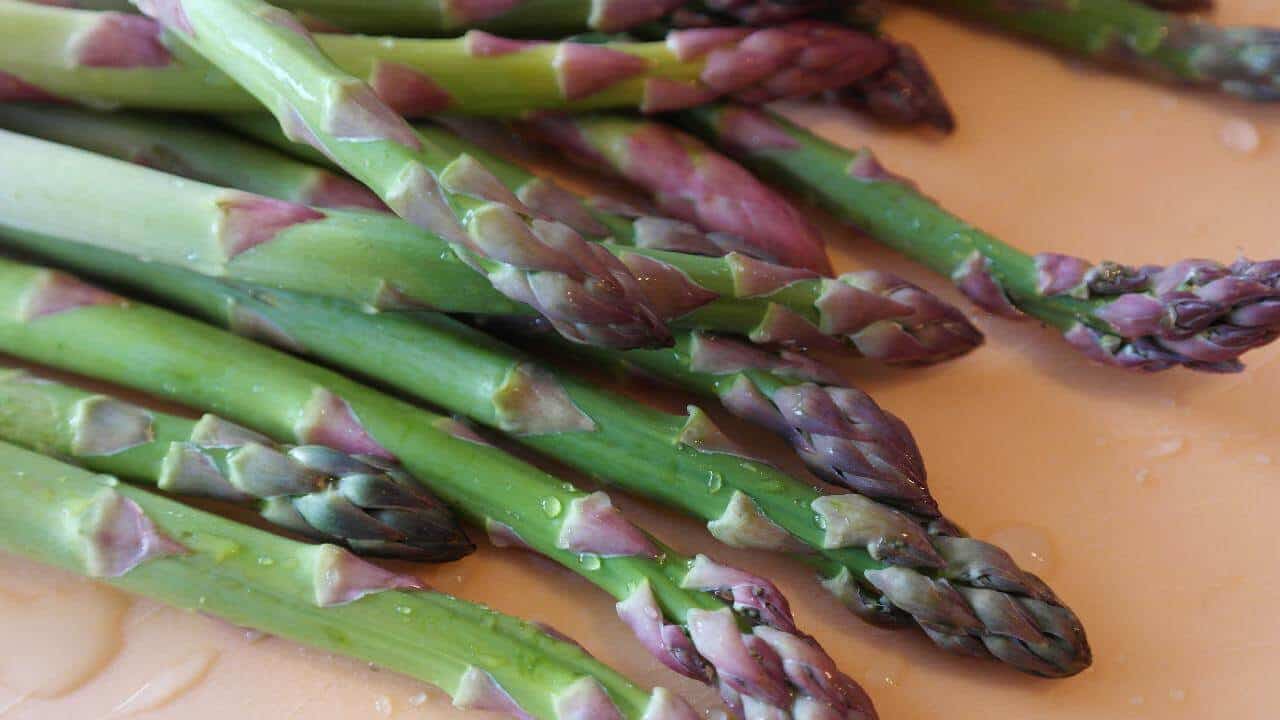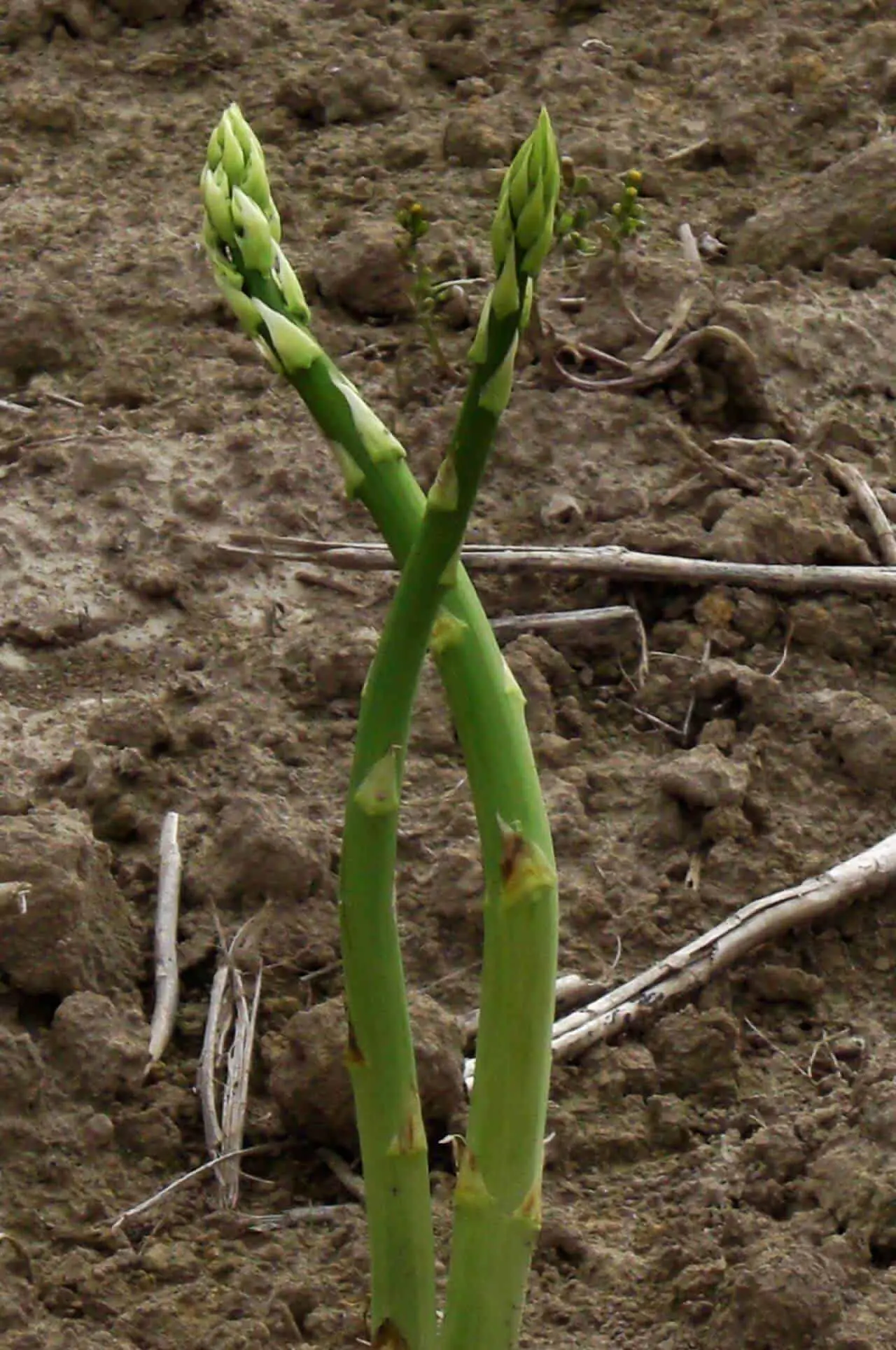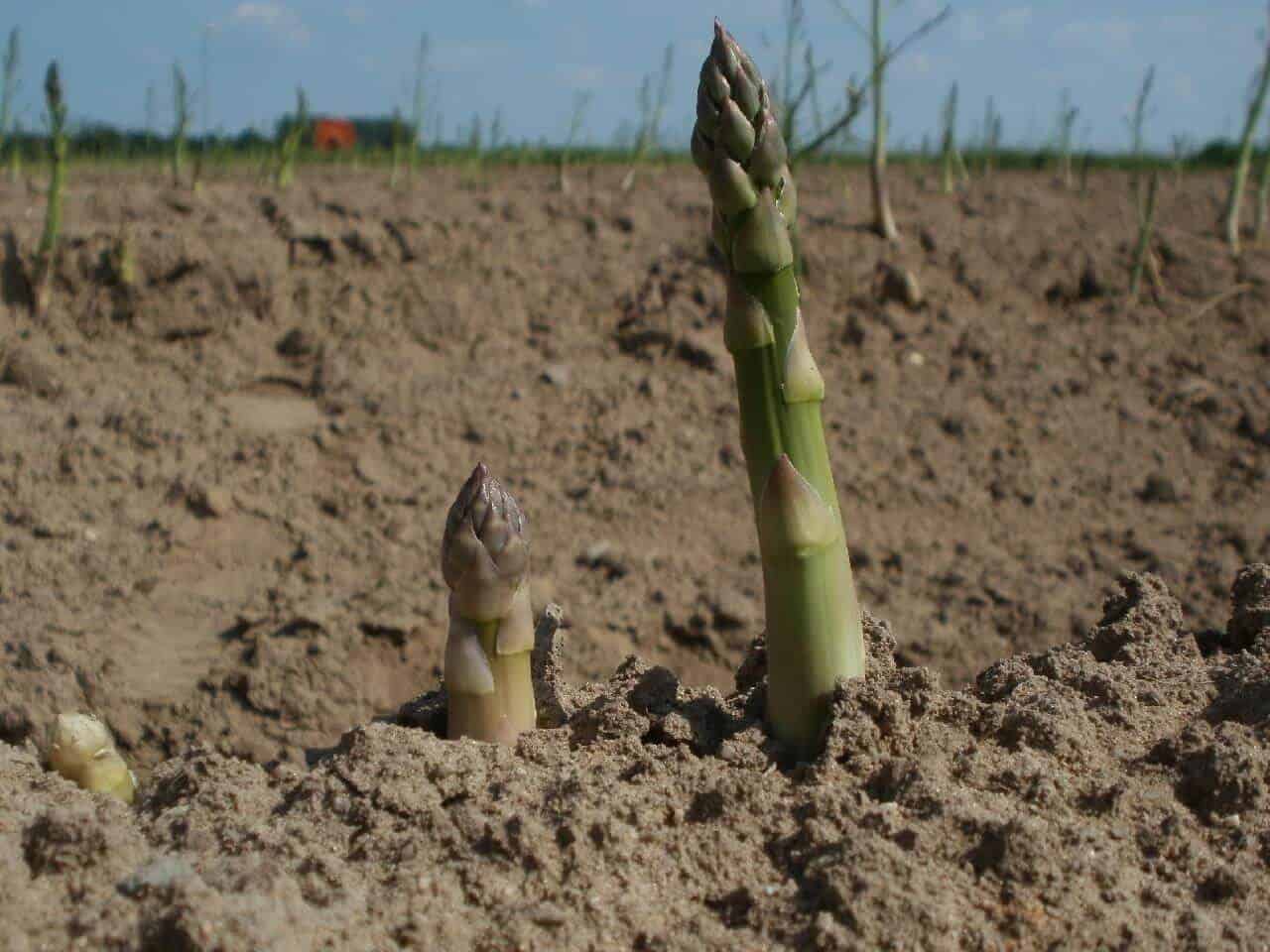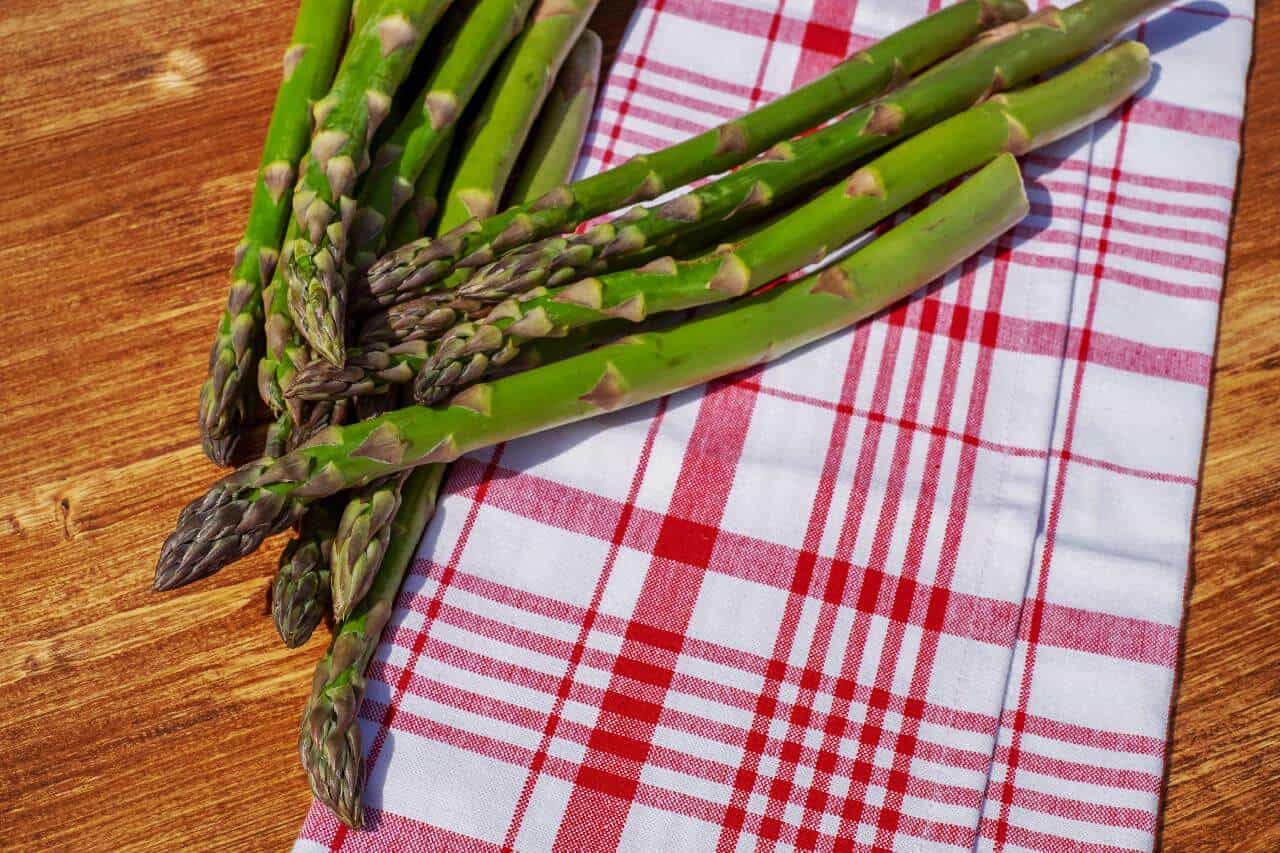Contents
Hi guys! Welcome to a new article where we’ll delve deep into how you could successfully grow an Asparagus plant over time. Often you might be wondering how you could grow Asparagus and ensure that it survives over time. In this complete guide, I’ll be discussing how you can grow Asparagus from its roots or stalk. I’ll also be discussing how you can get sand out of Asparagus. Lastly, I’ll be discussing how you can grow bare asparagus roots. So, let’s get into it.

How to Grow Asparagus from its Stalk
Growing Asparagus using its stalk (aka stem cuttings) isn’t the most successful way to plant it, but it is by far the most common method. On the other hand, planting an Asparagus plant using its seeds gives it its best chance of survival. However, growing from seeds takes much too long. Hence, the reason why the stalk growing method is preferred.
When planting using stalks (cuttings), the trickiest part that affects the success rate of this method is transplanting. Transplanting can be avoided by setting a selecting a permanent planting position well beforehand.

Here’s what you need to reconsider before selecting a permanent planting location:
The nature of the soil:
Asparagus prefers fertile, well-draining soil as it’ll be rich and capable of sustaining plant growth. However, if the soil isn’t rich enough, you can improve it. By digging the soil and mixing it with a layer of compost that has some phosphorus micronutrient added, you can create rich, well-aerated, and drained soil. Well-drained soil is preferred because Asparagus doesn’t like too much water. In excess water, its roots begin to rot.
Access to growth factors:
Growth factors such as exposure to sunlight, temperature, and oxygen availability will affect the plant’s growth. To work around this, you can choose to plant in a pot or raised seedbeds that can be moved per the plant’s demands. For example, when the weather is cold out, like in the winter, you can move the asparagus plant indoors and return them outside once the weather is favorable. Once you have the right planting location, you can proceed to plant the asparagus stem.
Plant during spring:
The spring is the best time to plant Asparagus, especially after the winter has just ended. They are best planted between March and April when the temperature is below 64F. The temperature during the early days of spring is ideal for the growth of Asparagus stems as it enables them to grow faster.
Select the right stem:
For the best results, you need to find a stem that has several cuts. This helps improve your chances of the stem growing into a new asparagus plant. It’s doubtful that you’ll have an asparagus stem lying around the house, so you will need to get one. If possible, buy several so you can pick the one that will most likely generate a better quality plant.
Planting the stem:
The planting process is similar to that of plants with roots. The significant difference is that with stems, you will need them to develop roots of their own. So, there will probably be no growth in the early stages of growth, where you would expect to see a stalk. However, once the stems have established roots of their own, the stalk can begin to grow. The roots are responsible for obtaining water and minerals from the soil to make growth impossible without them.
How to Grow Asparagus from Roots
When planting Asparagus using its roots, it is important to plant it while still fresh. If you cannot plant them immediately, you must keep them fresh to ensure that the roots remain viable. A method of achieving this is by wrapping the roots in sphagnum moss.
However, you need to ensure that it isn’t wrapped too tight. You will also need to ensure the roots are kept damp, which the sphagnum moss can help you with. Then, once the roots are fresh and ready to plant, follow the proper procedure.
Soak the roots:
Even after keeping the roots moist, you will need to soak them before planting. Soaking the roots will cause them to be viable for germination. If the roots are dried, then they won’t be able to germinate. Soak the root for about 20 minutes as a long time may end up ruining the roots. Water can soak it, but the ideal liquid for soaking asparagus roots is compost tea.
Dig a trench:
Digging a trench isn’t mandatory, but it is the most commonly used method for planting Asparagus. If you’re planting in a raised seedbed, the procedure will be different, but if you’re planting in a garden or you’re backyard, then you need to make a trench. The trench should be about 1 foot deep, and place the root crown in the trench and cover it with soil. Ensure that the root crown is at least 4 inches above the trench surface. You can create mounds atop the trench to achieve this effect.
Add sand to the trench:
When planting the root crowns, maintain a pace of at least 2 feet between each crown. As the crown begins to grow, you should add more soul into the trench. Continue adding soil to the trench as the plant grows, only stopping when the trench is filled. You should ensure that the top of the crown remains atop the soil each time you add soil to ensure that the plant continues to get access to sunlight and oxygen.
Routine maintenance:
Water the plants regularly to ensure the plant has an adequate water supply. Your Watering routine should not be based on normal timing but rather on the plant’s needs. Too much water can have a negative effect, so ensure you don’t drench the soil. Next up, you should avoid weeds as they can significantly hinder the growth of Asparagus. Mulching is a popular way to deal with weeds, and it also helps to regulate the temperature of the soil, keeping it warm. When spring comes around, add fertilizer to the soil. The fertilizer ratio best for Asparagus is 10:10:10. When it is winter, you should mulch your crop area, this time mainly to help keep your crop warm. Asparagus doesn’t thrive in cold weather, so you can apply other heat methods to ensure the continuous growth of your Asparagus.
How to Plant Asparagus Bare Root
Planting Asparagus bare root is probably the best available method. Unlike with seeds where you aren’t sure if the seed will germinate or not, or with stalks where roots need to be established, bare roots go straight to the point. Once you plant asparagus bare-root, you can begin to expect growth soon. You can start harvesting from the second year, but you are advised to do so sparingly. If possible, you should avoid harvesting the Asparagus till the third year. If you have to harvest, do so do only about a month in the year, allowing the plant to be undisturbed the rest of the year. When it comes to planting asparagus bare-root, you should:

Keep the roots moist:
Asparagus grows best when the roots are moist. If possible, you should plant it immediately when you obtain the roots rather than store them until later. Dried roots will not germinate; this cannot produce a new asparagus plant.
Keep away from other plants:
When you’re selecting your planting location, select somewhere isolated where Asparagus will be undisturbed. While Asparagus doesn’t do well in competition with most other plants, it grows tall, blocking out sunlight from smaller plants. Asparagus normally requires enough sunlight and warmth, so choose a location with adequate sunlight.
Follow the exact instructions as to when you’re planting Asparagus with normal roots. When harvesting asparagus planted with bare roots, you can start as early as the second spring after planting. On the other hand, you can choose to wait till the third spring, allowing the plants to be stronger, improving future harvests. If you choose to harvest in the second spring, don’t exceed a six-week harvest period, as anything more can affect the future harvests of Asparagus.
How to Get Sand Out of Asparagus
It isn’t uncommon to find after harvesting asparagus that the plant is filled with sand. Given the planting process, the trenches, and the amount of soil necessary, it would be a miracle if the harvested Asparagus isn’t sandy. Unfortunately, soaking or simply running the asparagus underwater isn’t enough to get out all the sand and result in a sandy meal. Once you have successfully cleaned the Asparagus, you can use it immediately or store it until later. Here are some common ways to properly rid your Asparagus of sand:

Washing:
Washing the Asparagus is the most common method as it doesn’t need too many materials. For the best results, you will need to ensure that you use running water. Wash the Asparagus with your hands thoroughly, removing as much of the sand as possible. Most people believe this is enough to remove all the sand, but this assumption is incorrect. After washing, you should remove the tough end of the Asparagus. In many cases, sand is a key reason why those ends are as hard as that. Once you have finished washing and removing the hard end, then you need to dry the Asparagus. You do this with a clean towel or napkin. This will help remove any sand particles that are resilient enough to resist both your hands and running water.
Blanching:
Set a pot on the stove and pour water till the pot is about three-quarters full. Allow the water to boil, and once it starts to boil, you dip your Asparagus into it. You will need to hold the Asparagus in the water for a few seconds, so wear protective gloves and hold the Asparagus with thongs. You should notice any leaves on the Asparagus begin to wilt before you remove the Asparagus. Continue the process for the entire batch of Asparagus you wish to clean. The hot water makes the stalks soft, allowing any sand present to wash off easily. When you are done with the hot water treatment, rinse the Asparagus with cold water. Be sure to use your hands to remove any sand particles that may still be present on the Asparagus. You can choose to dry the Asparagus with a towel, depending on whether or not you need it dry.
Shaving:
Shaving is probably the best way to eliminate the sand on the Asparagus without worrying about any particles surviving. Firstly, you will need to wash the Asparagus under running water, eliminating some sand, especially those located at the tender end of the Asparagus. After washing the Asparagus, you will proceed to peel it with a vegetable peeler.
The vegetable peeler will eliminate the outer layer of the Asparagus, leaving the inner layer untouched by sand. Some people may worry about the Asparagus losing some of its value with the outer layer, but that is not the case. The only downside of this method is that it is more time-consuming than the others as it requires you to treat the asparagus stalks one after the other. Once you have finished peeling the Asparagus, break off the tough end, and you can use the soft end for whatever you like.
For most people, the thought of planting a tree is a daunting task which is why they wouldn’t take part in it. However, with the information provided above, planting and caring for Asparagus becomes an easy task. With this information, anyone can grow Asparagus in their home without any prior experience. Just be sure to plant the appropriate quantity so you don’t have to waste Asparagus.
Want to know more about gardening ?
Fill in your email address in the form below and you'll receive all the latest updates directly in your in-box.
Thank you for subscribing.
Something went wrong.